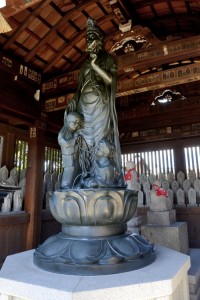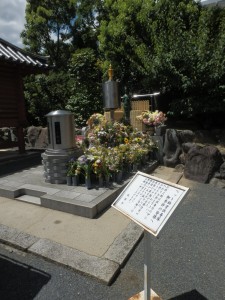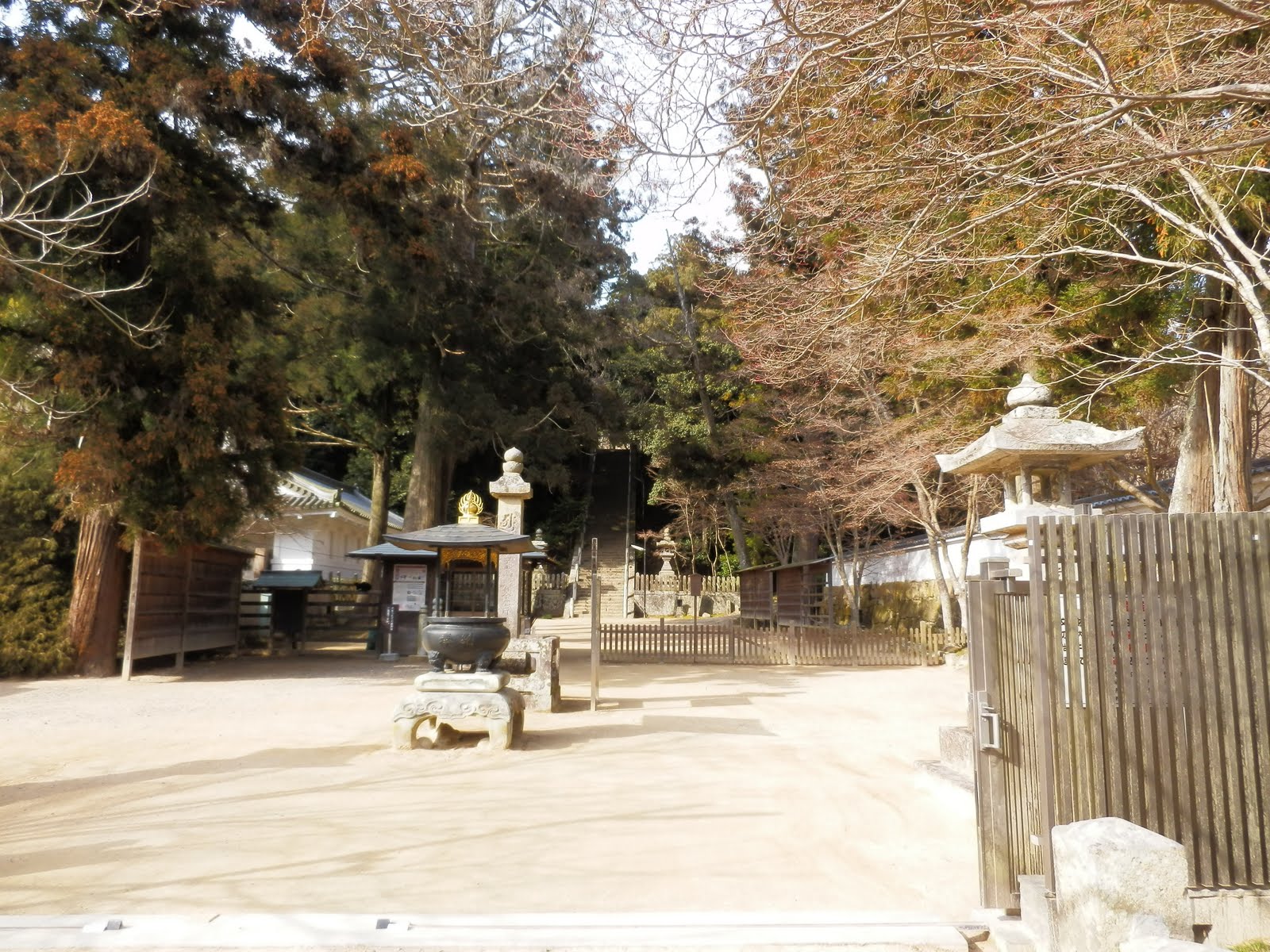Saigoku Kannon Pilgrimage: ç·æŒå¯º Souji-ji
Our journey takes us next to Souji-ji, a temple on the north east side of Osaka-fu and the 22nd temple on the route if you go in numerical order. There is a forest walking trail connecting this temple to last month’s Katsuo-ji. Souji-ji is the size of an unassuming city temple, but once inside, you’ll discover several features unique to Souji-ji amongst those temples collected on this pilgrimage.
The Honzon, or main image dedicated at this temple, is of a Senju (thousand-armed) Kannon riding on the back of a turtle. It is said to be the original image carved over a period of 1,000 days by a mysterious youth in the 9th century. During the civil wars, an attack by Oda Nobunaga had Souji-ji burned down, but only the lower half of the sacred image was burned; the upper half was said to have given off a golden glow. So, it is also called “Hibushi Kannon,†or the Kannon who submitted to the fire. Like many fire-surviving sacred images, it has become a protector against disaster, especially fire. The image is put on display for five days each year (this year from April 15th to 21st).
The Honzon’s depiction of Kannon riding on the back of a turtle has to do with the founding legend of the temple. Founder Chunagon Yamakage Fujiwara (also known as Masatomo Fujiwara) is considered the originator of Japanese cooking and is the patron deity of chefs. About a thousand years ago, when his father Takafusa was getting ready to board a ship on the Yodogawa he saw some fishermen had caught a large turtle which was probably going to be killed. Dedicated to Kannon and compassion, he purchased the turtle and set it free in the river. The next day as he boarded the ship, he was told his young son had fallen overboard (actually he was thrown by his wicked stepmother, but that’s neither here nor there). Takafusa prayed to Kannon that he would build a temple to share Kannon’s compassionate nature with others if she would be able to save his son now. And who should appear just then but the little boy, borne up through the water by the very turtle Takafusa had just saved!
Because of this part of the founding story, the temple has a close connection to animals. There is a large turtle pond on the grounds (which also serves as a Benzaiten shrine site), and while many temples are joined to cemeteries and offer rites for the deceased, Souji-ji is the only temple on the pilgrimage to feature a pet cemetery. Souji-ji offers services for pet memorials, and you can also find amulets for pets in the temple shop.
The story goes on to tell that Takafusa vowed to build a temple in gratitude, and sent a priest to China to carve a Kannon image for his proposed temple. That priest went to China to get sandalwood, but wasn’t able to ship it back because of embargoes, so instead the priest threw the log of sandalwood into the sea. Years later, after Takafusa’s death when Yamakage had taken over, he found the log washed up on the beach and decided to fulfill his father’s vow.
Yamakage tried to take the log to Kyoto to get it carved, but when he reached the location of Souji-ji, the log became too heavy to be moved. He prayed and prayed some more, and was instructed by Hase Kannon to build his temple on that location; there was no sculptor available to make the image, so Hase Kannon instructed him to ask the next person he saw to be the one to do the carving. A youth of about 14 appeared (said to be a keshin, or incarnation of Kannon), and said he would complete the carving on the condition that over the 1,000 days it would take to complete the image, Yamakage would provide him something different to eat every day.
Yearly on April 18th (in the middle of the Kannon-display days), there is a ceremony called Hochoshiki at Souji-ji for the “Way of the Knife†as started by Yamakage, father of sushi and Japanese cuisine; it involves slicing and presenting fish in a flowing and artful way. There is also a knife dedication place (Hochozuka) at the temple for restaurants or families to dedicate knives once they have become unusable.
As for February, there is of course a Setsubun celebration on the 3rd, but it is otherwise a quiet month.
 Finally, we have our standards, the front gates and the temple bell (ring it, but gently, as it is super old, the sign says). As seen at some other temples, there is a Mizuko Jizo (patron of the water babies), and the rarer Bokefuji Kannon (protector against senile dementia). Souji-ji is part of a Bokefuji Kannon pilgrimage (of which Imakumano Kannonji is also a part). Inside the Fubi-Kannon-Do (Hall of the Universal Compassion Kannon) you will find the miniature pilgrimage symbolizing all 33 temples.
Finally, we have our standards, the front gates and the temple bell (ring it, but gently, as it is super old, the sign says). As seen at some other temples, there is a Mizuko Jizo (patron of the water babies), and the rarer Bokefuji Kannon (protector against senile dementia). Souji-ji is part of a Bokefuji Kannon pilgrimage (of which Imakumano Kannonji is also a part). Inside the Fubi-Kannon-Do (Hall of the Universal Compassion Kannon) you will find the miniature pilgrimage symbolizing all 33 temples.
Souji-ji is easily accessible at a 5 minute walk from the Hankyu Kyoto Line Sojiji Station. Entrance to the temple is by personal donation, and hours are 6:00 to 17:00.
The Souji-ji main page is http://www.sojiji.or.jp/, for more information and photos of the knife ceremony (http://www.sojiji.or.jp/cnt_eve2.html)
Bokefuji photo from http://kappanda.blog.so-net.ne.jp/2012-10-28
Emily Lemmon





